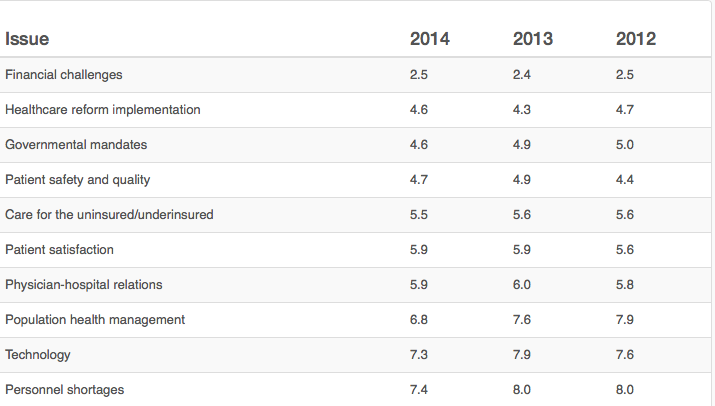Financial Challenges: The Biggest Concern for Hospital CEOs
A recent study showed that for the 10th year in a row, financial challenges are #1 on hospital CEO's list of concerns. More than healthcare reform, government mandates, and patient safety, the constant battle to be financially stable is the what keeps the healthcare C-suite up at night. So what factors are contributing the the financial worries? Let's take a look.











